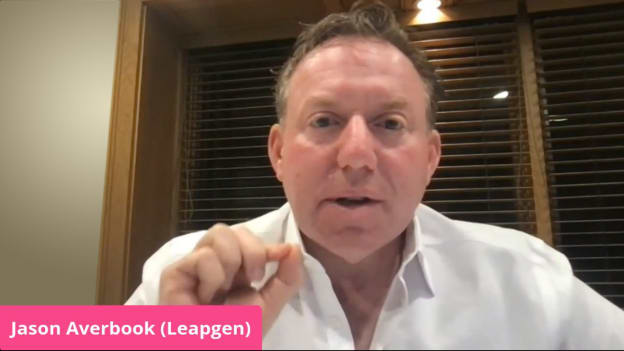Digital transformation is about enhancing humans

The future of work is now: a distributed, hybrid, remote workforce powered by technology. And as organisations push to transform in response to the evolving world, they absolutely must focus on the human aspect of work and technology, says transformation guru Jason Averbook, CEO and Co-Founder of Leapgen.
Delivering the keynote “ACTING ON THE NEXT PHASE: Accelerating People through Digital Transformation” at People Matters TechHR India Conference 2021, Jason said that when it comes to digital or, in fact, any other kind of transformation, three points are critical:
-
Have a strategy or a vision
-
Deploy that strategy
-
Sustain that strateg
“Treat your strategy like a pet, not like a rock,” he advises. “Keep maintaining it, keep innovating, keep being agile.”
So what should that strategy look like in the first place? It's all about humans, Jason said.
Focus on human experience
“In the now of work, we must put people at the centre; we must put experience at the center,” Jason says. “We're humans outside of work; are we humans inside of work? Are we inhuman?”
The answer, he firmly states, is NO. In today's disrupted world, filled with uncertainty and negative events from pandemics to exhausted workforces to poverty, it is all the more important for HR functions to remember that they are dealing with people. And the purpose of digital transformation is to help HR professionals do their job with greater empathy, understanding, and agility.
“Digital transformation does not mean buying a new piece of technology. Digital transformation means working, thinking through, aligning our mindset and vision around what are you trying to do: understanding your people, how they work, how they feel."
Build connection
What causes people to rethink whether they want to work for a company is not whether they are connected, according to Jason. It is whether they are building connection. But how can we help them to build connection?
As humans, we have three resources that we can use to transform he says: the hands, which are good at transactional work; the heads, which are good at collecting data and telling stories about it; and the hearts, which are good at making people feel like where they work is a place where they can be their best selves.
“The combination of transactions and interactions—interactions with people, interactions with bots, interactions through machine learning—that's what creates experience,” he says. But, he points out, we cannot just focus on the technology.
“The value of digital is not about eliminating humans. It's about enhancing humans. Every day of our lives at Leapgen, we hear this conversation about the business case for eliminating people. Stop eliminating people! The only reason you're trying to eliminate people is because your people haven't been doing human work, they've been doing machine work. If people are doing human work, you're not going to be eliminating them, you are going to be adding them.”
Deploy human capability
Employee experience and its next level, workforce experience—which involves not just employees but job applicants, contractors, and others—requires us to stop implementing technology and start deploying human capabilities.
To get the ball rolling, Jason suggests the strategy of using personas and a whole person approach: understanding a person's story, her needs and expectations, her roadblocks and frustrations, how she likes to be communicated with, what HR information she wants access to and how she finds it, how she adapts to change.
“If you know this, your chances of building connection with [a person] are a gazillion percent greater than saying, 'I'm going to push up technology to employees and hope they use it',” Jason says.
Rather than HR for HR's sake, or technology for technology's sake, he points out that these things must be done for people's sake.
“We must automate in order to humanate.”
Digital transformation makes technology necessary, but in turn, that technology must be used not to move people further away from each other, but to bring them closer.
“Better data plus better people practices drives better experience.”















